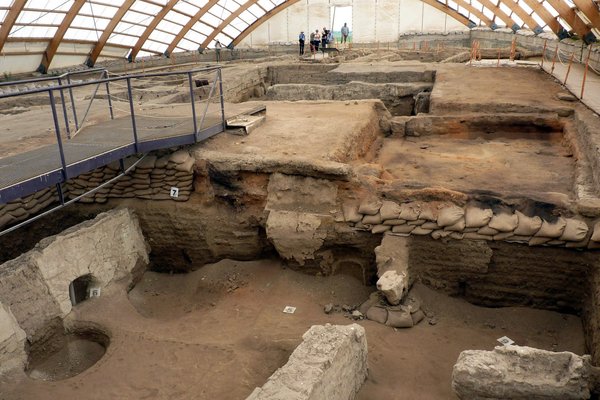Turkiye
Çatalhöyük
The Neolithic Site of Çatalhöyük consists of two tells with well-preserved remains from the Neolithic and Chalcolithic periods.
This was a large agrarian settlement that was permanently inhabited. Mud-brick houses have been found with wall paintings and other decorations. There were no streets, entrance to the buildings was via the roof and burials were mostly beneath house floors.
Community Perspective: The (still rural) site has a good museum / interpretive center (since 2023), two excavation sites (one closed to visitors since at least 2022) and a reconstruction of a dwelling. Zoë has provided public transport info from Konya.
Site Info
Official Information
- Full Name
- The Neolithic Site of Çatalhöyük (ID: 1405)
- Country
- Turkiye
- Status
-
Inscribed 2012
Site history
History of Çatalhöyük
- 2012: Advisory Body overruled
- ICOMOS had advised a Referral to create New Management Plan
- 2012: Inscribed
- Inscribed
- Type
- Cultural
- Criteria
- ii
- iii
- iv
Links
- UNESCO
- whc.unesco.org
- Official
-
- catalhoyuk.com — Excavations at Çatalhöyük
- muze.gov.tr — Çatalhöyük Archaeological Site
All Links
UNESCO.org
- whc.unesco.org — whc.unesco.org/
Official Website
- catalhoyuk.com — Excavations at Çatalhöyük
- muze.gov.tr — Çatalhöyük Archaeological Site
News Article
- March 10, 2024 edition.cnn.com — ‘World’s oldest bread,’ dating back 8,600 years, discovered in Turkey
- Nov. 23, 2023 dailysabah.com — Çatalhöyük new visitor center opens
- Nov. 15, 2019 forbes.com — Human Tooth Jewelry Discovered At Neolithic Site In Turkey
- Sept. 15, 2016 dailysabah.com — Neolithic figurine, over 7,000 years old, unearthed at Turkey’s Çatalhöyük
- Oct. 3, 2014 hurriyetdailynews.com — Çatalhöyük excavations reveal gender equality
- Feb. 7, 2014 hurriyetdailynews.com — Centuries-old fabric found in Çatalhöyük
Community Information
- Community Category
- Archaeological site: Prehistoric
Travel Information
Ankara Hotspot
Recent Connections
-
Role of Women
Latest research suggests that Catalhöyü…
-
Ankara Hotspot
Ankara - Konya is 1h 45 min by train. A… -
Proto-cities
".. common examples include .. Çatalhöy…
Connections of Çatalhöyük
- Trivia
-
-
Former Largest Cities
with a good probability the worlds largest city around 7000 BC with an estimate of 5000-10000 inhabitants. -
Role of Women
Latest research suggests that Catalhöyük was a female-centered society. (source)
-
- History
-
-
Neolithic age
"Çatalhöyük provides a unique testimony to a moment of the Neolithic, in which the first agrarian settlements were established in central Anatolia" (OUV) -
Oldest Buildings
7200-6400BC. "•Çatalhöyük East was continuously occupied between 7200 - 6400 cal BC. However it cannot be assumed that these represent the earliest or the latest dates of occupation" (Man plan). Within the East mound a "shelter covers the South area excavations in their entirety" and permits visitors to view a large number of individual houses. This report describes many of the buildings under the South shelter -
Chalcolithic
"The Western tell excavations primarily revealed Chalcolithic occupation levels from 6,200-5,200 BC" (OUV) -
Historical Food Remains
BreadSee edition.cnn.com
-
Proto-cities
".. common examples include .. Çatalhöyük" (wiki)See en.wikipedia.org
-
- Ecology
-
-
Obsidian
"Obsidian represented the main raw material with which the inhabitants of Çatalhöyük made their flaked stone tools, despite the fact that the nearest sources of this material lay some 190 km away....The vast majority of the obsidian found at Çatalhöyük came from two different volcanoes in southern Cappadocia: Göllü Dağ and Nenezi Dağ" (Nomin file) -
Aurochs
Large caches of Aurochs horns have been excavated in the form of "Architectural Installations" - indicating religious and ritual purposes. These predate, or are on the cusp of, domestication - There is also a famous mural of an aurochs hunt (in Anatolian Museum Ankara)See www.persee.fr
-
- Architecture
-
-
Earth Architecture
mud brick houses (AB ev)
-
- World Heritage Process
-
-
First sites filling gaps cited by ICOMOS
Anatolian cultures 2012
-
- Religion and Belief
-
-
Cult of Cybele
Cybele "may have evolved from a statuary type found at Çatalhöyük in Anatolia, of a "corpulent and fertile" female figure accompanied by large felines, dated to the 6th millennium BC and identified by some as a mother goddess." (wiki)See en.wikipedia.org
-
- Human Activity
-
-
Ongoing Archaeological digs
-
Residential burials
"As a part of ritual life, the people of Çatalhöyük buried their dead within the village. Human remains have been found in pits beneath the floors and, especially, beneath hearths, the platforms within the main rooms, and under beds" (Wiki)
-
- Constructions
-
-
Tell
two large tells (AB ev) -
Protective Shelters
"Each mound hosts a large shelter that contains the digs." (wikivoyage)
-
- WHS on Other Lists
-
-
Global Heritage Fund
Responsible for the design and construction of the shelter, among other accomplishments. -
World Monuments Watch (past)
Çatalhöyük Archaeological Site (1996, 2000)
-
- Timeline
-
-
Built in the 8th millennium BC
Çatalhöyük developed as a settlement in the Neolithic period and was occupied for 2,000 years from approximately 7,400 - 5,500 BC (AB ev)
-
- WHS Hotspots
-
-
Ankara Hotspot
Ankara - Konya is 1h 45 min by train. And konya to catalhoyuk is 45min by taxi.
-
- Science and Technology
-
-
Experimental Archaeology
One of the more recent structures on the site is the experimental reconstruction house which was constructed between 1999 and 2002 .......The house does not replicate one specific excavated building but is an amalgam of a number of features common to the Neolithic buildings of Çatalhöyük such as platforms, ovens and wall paintings. The original aim of the house was as a research tool to investigate the building techniques used at Çatalhöyük. Experiments such as painting on the lime plaster walls, and building and lighting a hearth take place inside the house. Furthermore it is a very effective interpretative and especially educational tool. The construction of the house provides the archaeologists and visitors with a physical experience of what it might have been like to live at Çatalhöyük, in terms of space, movement and light. The house complies with all aspects of the ICOMOS Charter for the Protection and Management of Archaeological Heritage (1990), Article 7 on archaeological reconstructions" (Man Plan)
-
News
- edition.cnn.com 03/10/2024
- ‘World’s oldest bread,’ dating bac…
- dailysabah.com 11/23/2023
- Çatalhöyük new visitor center opens
- forbes.com 11/15/2019
- Human Tooth Jewelry Discovered At …
Recent Visitors
Visitors of Çatalhöyük
- Afshin Iranpour
- Alberto Rodriguez Gutierrez
- Alexander Barabanov
- Alexander Lehmann
- A. Mehmet Haksever
- Artur Anuszewski
- Aspasia
- Astraftis
- Atila Ege
- bergecn
- Bill Koo
- Bin
- Can SARICA
- Cheryl
- christof
- Clyde
- Corinne Vail
- Csaba Nováczky
- CynthiaSam
- Dan Pettigrew
- Dimitar Krastev
- Elaine McArdle
- Els Slots
- Fan Yibo
- George Gdanski
- Hadrianus
- Harry Mitsidis
- Hasco
- henryjiao18
- Hubert
- Iain Jackson
- Ivan Rucek
- Jan-Willem
- Jarek Pokrzywnicki
- Jawnbeary
- Jeffrey Chai
- Judit Andrea Juhász
- Juha Sjoeblom
- KarenBMoore
- Knut
- Kurt Lauer
- Lado Joel
- Loic Pedras
- Lucas Del Puppo
- Ludvan
- Luis Filipe Gaspar
- Luke LOU
- Maciej Gil
- Martina Rúčková
- MaYumin
- mg:1
- Mikko
- Milan Jirasek
- nan
- Nihal Ege
- Patrik
- Paul Schofield
- Rafał Kałczuga
- Randi Thomsen
- RobRos
- Roger Ourset
- Roman Bruehwiler
- Sclowitz
- Solivagant
- Stanislaw Warwas
- Svein Elias
- Szucs Tamas
- Tamara Ratz
- Tarquinio_Superbo
- Thomas Buechler
- Thomas van der Walt
- Tim Allen
- tony0001
- Tony H.
- Wojciech Fedoruk
- Yevhen Ivanovych
- Zoe
- Zoë Sheng
Community Reviews
Show full reviews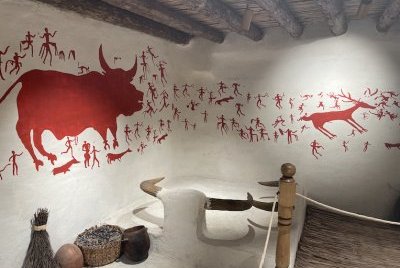
I visited this site in May 2025. As mentioned, there is a brand new museum that is really well-done. There's interactive screens and buttons you can press to learn about the different reasons Çatalhöyük is important. For instance, Çatalhöyük showed evidence of a egalitarian society, with no difference in the treatment of men and women. No one home unit was more elaborate or larger than another, also seen as evidence towards this point. There is, additionally, a replica of the houses on site (pictured) that you can freely walk into and get a feel for what it might have been like thousands of years ago. Other facilities on site: cafe, bathrooms, gift shop, and lookout tower. I was a big fan of the museum and found it to be really interesting. The reason I didn't rate it higher is simply because there isn't much to see of the actual archeological part! When I was there, they said only 10% of the estimated remains had been excavated. Additionally, most of the findings (statues, tools, etc) in the museum are replicas; the real versions are in the Konya Archeological Museum. I don't personally mind all the replicas, but some might.
The main reason I wanted to make this review was to highlight that there is now a daily shuttle going to Çatalhöyük from Konya's city center (which is also a tentative site itself). The company is Dolash Konya City Tours, where they tell you it's a "guided tour" but it's …
Keep reading 0 comments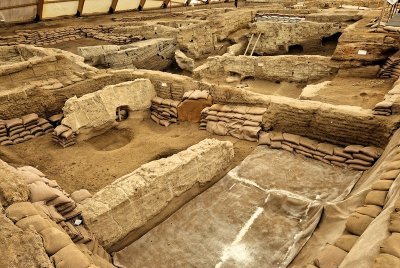
After reading the reviews of other users of the site, I realized that visiting Çatalhöyük is completely different now and requires a new review. In the end of 2023, a completely new museum was opened (although the name ‘interpretive center’ sounds better, since there are very few original artifacts here). Because of this, the place is no longer free, foreigners pay the equivalent of 5 euros - but believe me, it will be money well spent. The museum is well constructed and presents the history of the excavations and their importance very well. In an interactive way, you can learn a lot about archaeology, discoveries in the area of Çatalhöyük, and even how scientists came to specific conclusions. Great emphasis was placed on explaining the uniqueness of Çatalhöyük - the place had been continuously inhabited for almost two millennia and had an unusual, egalitarian social structure.
To get to know the entire museum well, you need to spend at least 1-1.5 hours, but after such a lesson, no one will have any doubts that they are viewing one of the most important archaeological sites in the world. Then you can go outside, to the replicas of ancient houses and to the site itself. There is no problem with mud anymore - you can walk everywhere via a new wooden ramp. Currently, only one stand is available, but the ramp also leads to the second one, which leads us to believe that its opening is also planned.
The archaeological …
Keep reading 0 comments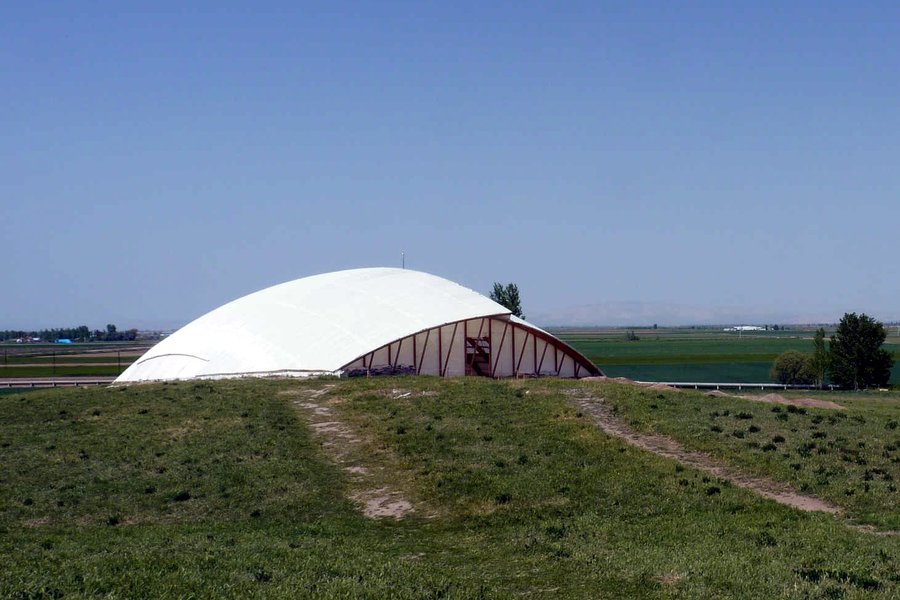
In September 2019 I went there with my parents on a road trip. It is in Konya borders. around 30 minutes to city and 15min to the main road.
You can take a taxi from Konya or with Dolmus (small shuttles) you can take from Cumra.
It was very interesting to see how people lived thousand years ago and seeing one of the first human settlement in history.
You can see 9.000 years ago what they ate, how they did the agriculture, where they sit and slept. House designs etc.
Design of the houses were interesting to protect themselves they made the entrance from the roof with a wooden ladder. so all the houses are connected to each other. there is no street.
Keep reading 0 comments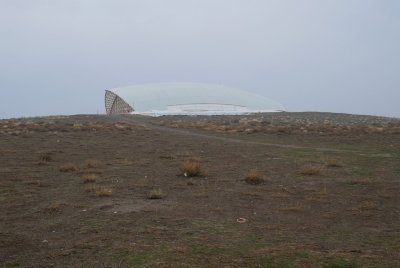
On January 2nd and to kick of 2022, I went to look at a mud hill, i.e., Çatalhöyük. A 30min taxi ride from downtown Konya had taken me to a archaeological site in a rural village with gravel roads. And all there was to see was a muddy hill with a large tent on top. Not sure, what that says about my life ;)
The site is free, but guarded. The guard first made me visit the on site museum. He was so kind to turn on the light, but there was little content to illuminate. The exposition reminded me more of an exposition at my high school than of a museum for one of the most important global archaeological sites for early human settlements.
In front of the museum is a replica hut, so I visited that, before making my way up the hill and the tent to see the excavation. The whole hill actually covers the ancient city, but only portions have been permanently excavated. It's strikingly obvious why when you see the open parts: The mud walls are crumbling and the archaeologists are fighting to stabilize them.
The excavated parts under the tent give a good view of the densely populated village. Houses were build wall to wall with garbage dumps in between. And even on top of each other over the centuries. Humans were buried below the houses, possibly in the old houses which is a reason for the rich finds.
You …
Keep reading 0 comments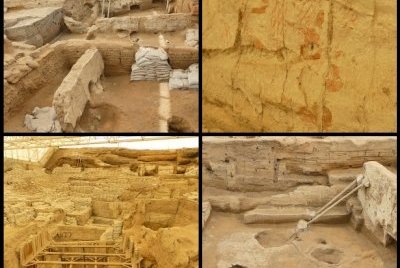
I visited this WHS in Spring 2021. Catalhoyuk is a few kilometres away from Konya, which is a great city to base yourself for a couple of days. This WHS has a free entrance which was a very welcome change after the crazy post-COVID lockdown price spikes all over Turkey.
Catalhoyuk was a very large Neolithic and Chalcolithic proto-city settlement in southern Anatolia, which existed from approximately 7500 BC to 6400 BC. As such, it is a very precarious archaeological dig covered with 2 big tents (not as modern as the one in Gobeklitepe, but with a wooden boardwalk through one of them). Most of the remains are still underground even though the site was discoverd in 1958. Most of the mud walls are crumbling or have already crumbled notwithstanding the wooden supports and several sacks which have been placed. According to UNESCO, the site's OUV lies in the important evidence it provides of the transition from settled villages to urban agglomeration, which was maintained in the same location for over 2,000 years. It features a unique streetless settlement of houses clustered back to back with roof access into the buildings.
Catalhoyuk was composed entirely of domestic buildings, with no obvious public buildings even though the larger buildings have rather ornate murals. Unlike Arslantepe, most of these wall paintings have been removed and placed in museums around Turkey, most notably in the Museum of Anatolian Civilizations in Ankara. This same museum houses the famous clay sculpture of a …
Keep reading 0 comments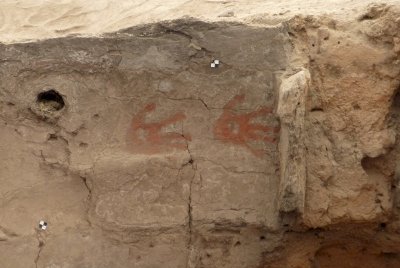
Again, a place I went to as a last-minute decision and probably the most fascinating archaeological site I have visited up to date.
Some personal story of the visit: it was back in early August 2012, so the site had just been nominated on the list. In fact, I do not remember if I was aware of its World-Heritage status, but surely my guide book wasn't. I was just curious of the description and, as it happend that we (a group of 5 people) were in Konya and heading to Kapadokia the next day, I managed to convince a friend to set off for Çatalhöyük at 6am, so as to be back at a decent time to continue with the others. And so it was!
I remember that it was very easy to reach the site: we were by car and just took the road to the south-east across the country, and after less than an hour we were there. There is not much else on the way, just cultivated fields and small villages. I don't remember particular signs. At first we thought the site was closed, there were no signs and no indications of opening hours nor any obvious entrance. But it just turned out that it was before 8am and we were the ones to waken the people there on that morning... poor fellows, no peace for them!!! However, the site was already somehow prepared for visitors, since the archaeologist who, before "going back to …
Keep reading 0 comments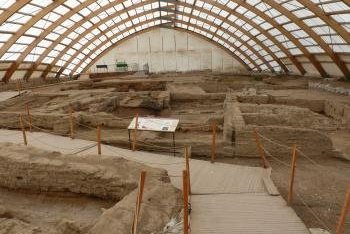
Çatalhöyük is one of the World’s great “iconic” archaeological sites – not because of any monumental remains but because of the light it shone and is still shining, on daily life in the Neolithic age. What is “on show” is basically an archaeological dig which has uncovered a series of houses dating back around 9000 years and covering occupation across 2000 years. The walls, floors and features (e.g House graves) are presented largely as they were uncovered. Indeed the dig is still in progress with researchers carrying out further digging each year. One particularly famous discovery was made as recently as the 2011 season – a wall painting which, one theory suggests, may have been “a map showing brick pathways across the rooftops of Çatalhöyük”
The site has yielded significant artifacts and artistic work (particularly figurines. wall paintings, obsidian mirrors etc) but, understandably, these have been removed. The discoveries have also led to the development of a number of hypotheses about social organization and religion in the Neolithic age. The dig itself has adopted and developed new archaeological approaches and techniques Anyone interested in Catalhoyuk should really make sure that they visit the “Museum of Anatolian Civilisations” in Ankara where many of these are on show - and very fine they are! I personally would try to go there before seeing the site.
At the entrance to the site (but outside the core zone) are an experimental reconstructed house with reconstructed decorations and artifacts and a small museum. I am …
Keep reading 0 comments
